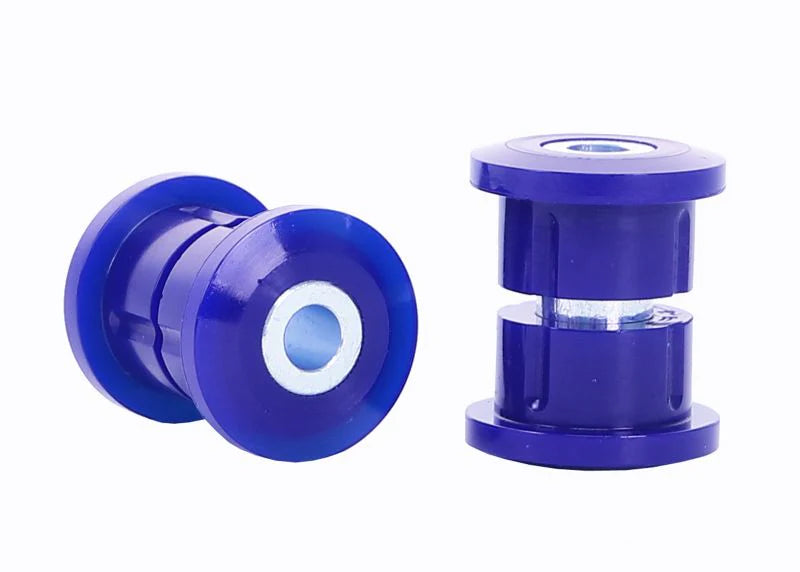Spherical Bearings vs. Rubber Bushings: Pros and Cons for Performance Driving
When it comes to dialing in the suspension for your performance car, the components connecting your control arms, sway bars, and other suspension parts to your chassis make a big difference. At the heart of this discussion are spherical bearings and rubber bushings, two very different solutions that offer unique advantages depending on your goals. In this guide, we’ll break down the pros and cons of each to help you decide which is right for your setup.
What Are Rubber Bushings?
Rubber bushings are the stock choice for most vehicles, including Subarus. They’re made from durable rubber material that allows flexibility and vibration absorption while maintaining adequate alignment of suspension components.
Pros of Rubber Bushings:
1. Comfortable Ride:
Rubber absorbs vibrations and reduces road noise, making it ideal for daily driving and long trips.
2. Cost-Effective:
Rubber bushings are typically more affordable than spherical bearings and easier to replace.
3. Corrosion Resistance:
Being non-metallic, rubber won’t rust, which can be a factor in harsh environments.
Cons of Rubber Bushings:
1. Flex Under Load:
The flexibility of rubber can allow unwanted movement, which translates to less precise handling during aggressive cornering.
2. Wear and Tear:
Over time, rubber bushings degrade due to heat, oil exposure, and general use, requiring periodic replacement.
3. Limited for High Performance:
For high-power, track-focused builds, rubber bushings can become a limiting factor in maintaining proper alignment under stress.
What Are Spherical Bearings?
Spherical bearings, often referred to as “heim joints” or “monoballs,” use a metal bearing inside a metal race to provide a precise pivot point. They are commonly used in aftermarket suspension systems for track and autocross cars.
Pros of Spherical Bearings:
1. Maximum Precision:
Spherical bearings eliminate flex, providing better feedback and keeping the suspension geometry consistent under heavy loads.
2. Improved Handling:
By reducing compliance, they allow for sharper turn-in, better mid-corner stability, and more consistent performance.
3. Durability for Performance:
High-quality spherical bearings can handle extreme forces without deforming, making them a must-have for dedicated track cars.
Cons of Spherical Bearings:
1. Reduced Comfort:
The lack of vibration absorption can lead to a harsher ride, especially on rough roads.
2. Higher Maintenance:
Bearings are exposed to dirt, water, and corrosion, requiring frequent inspection, cleaning, and lubrication to maintain performance.
3. Expense:
Spherical bearings are more costly than rubber bushings and often require specialized installation tools.
Which Is Right for You?
The choice between rubber bushings and spherical bearings depends on your vehicle’s primary use:
• Daily Driver: Stick with rubber bushings for their comfort, quietness, and low maintenance.
• Weekend Warrior or Street Performance Build: Consider a mix of both. Replace key areas like control arms or rear trailing arms with spherical bearings while leaving others rubber for balance.
• Track-Focused Build: Go all-in on spherical bearings to maximize precision and handling. Just be prepared for extra noise and maintenance.
GripWorx Suspension’s Take
At GripWorx Suspension, we believe every build deserves tailored solutions. Whether you’re refreshing your daily driver’s suspension or prepping your Subaru STI for autocross, understanding the trade-offs between spherical bearings and rubber bushings is key to optimizing your car’s performance.
Need advice on the best upgrades for your setup? Reach out to us for expert recommendations and a selection of top-tier suspension components designed for your goals.
Get the grip you need, where it matters most.
Visit GripWorxSuspension.com today!

